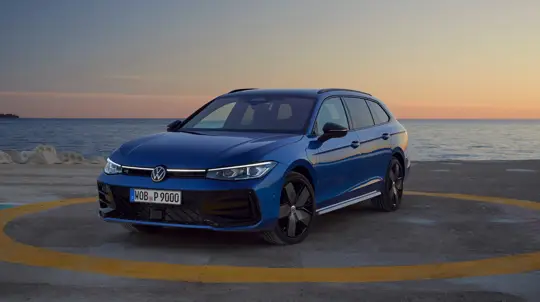Discover the innovation behind Volkswagen's expanded Passat lineup, of...
2024, Mar 21 03:17

Manufactured by the German automobile giant Volkswagen, the Passat has traversed nine generations, each marked by innovation, technical advancements, and a commitment to quality and performance.
The Passat’s journey began with the first generation (B1), launched in 1973, showcasing a fastback variant of the mechanically identical Audi 80 sedan. Designed by Giorgetto Giugiaro, it was among the most modern European family cars of its time, featuring front-wheel drive and a hatchback, a rarity for cars of its size then, with the exception of the Renault 16 and Austin Maxi. The initial engines were 1.3 and 1.5-liter petrol units, later expanded to include a 1.6-liter version and eventually a diesel variant. This generation also marked the Passat’s debut in North America as the Volkswagen Dasher.
By the time the second generation (B2) was introduced in 1980, the Passat had gained a reputation for being a reliable, family-friendly vehicle. This generation expanded on its predecessor’s offerings with a slightly longer body, a range of four-cylinder petrol and diesel engines, and for the first time, a five-cylinder engine option. It also introduced the Syncro four-wheel drive setup, a significant technological advancement.
The Passat continued to evolve with the B3 and B4 generations in the late 1980s and early 1990s, introducing a more aerodynamic body, a shift from the Audi platform to a Volkswagen platform, and significant improvements in power and safety features. These changes highlighted Volkswagen’s commitment to innovation and the model’s growing differentiation from its Audi cousins.
The B5 generation, debuting in 1997, cemented the Passat’s status in the European mid-size car market. Sharing a platform with the Audi A4, this generation offered a significant leap in terms of aerodynamics, interior space, and safety features. It was also notable for its engine range, which included a 4.0-liter W8 in the B5.5 facelift. The B6 and subsequent generations continued this trend of technological advancement and quality improvement, introducing FSI engines, a more upscale interior, and even a hybrid variant in the B8 generation.
The Passat B7 and B8, although considered facelifts of their predecessors, brought substantial updates, including new grille designs, headlight configurations, and updated engine ranges. The introduction of the Passat GTE hybrid in the B8 generation marked Volkswagen’s commitment to electrification and sustainable mobility. Meanwhile, the Passat B9 and B10 are expected to push the boundaries further with advanced driver assist features, better hybrid performance, and a focus on cleaner engines.
Throughout its history, the Passat has been more than just a car; it has been a reflection of Volkswagen’s technological advancements and its response to the evolving demands of the automotive market. From the introduction of front-wheel drive in the 1970s to the adoption of hybrid technology in the 21st century, the Passat has consistently been at the forefront of automotive innovation. With sales approaching the 30 million mark, it stands as a testament to Volkswagen’s enduring appeal and the global appetite for reliable, advanced, and efficient vehicles.
